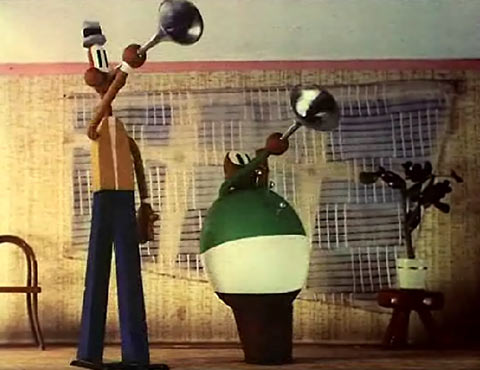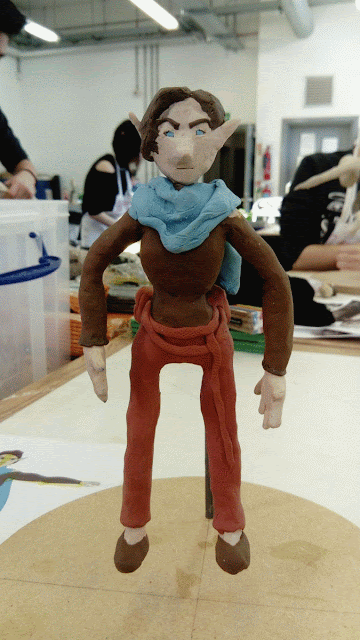Process and Production
Study Task 6: Analogue Character Modelling and Realisation
To create the puppet of my protagonist, I printed a 20cm high copy from the T-Pose sheet and began making the wire frame. I had to make some adjustments to the neck and shoulders, for the movement to work, however, this worked in my favour when the form was built up.
As my character is small and slim, I had to use Epoxy to sculpt out the "bones" of the limbs, such as on the arms and legs. I only needed a small amount of blue foam in order to build the chest and head, as I wanted to allow more movement of the character overall. Once the Epoxy had dried and the foam was glued in place, with a hot glue gun, I was able to make the hands. I think I had cut the wire a little bit too short, so the fingers were un-even and some were far too short than others. I, then, used bandages and self-adhesive bandages to mould out the character ready for plasticine moulding.
After this, I was able to start moulding with Plasticine. I had taken a small chunk home to manipulate and understand how I was going to mould her clothes and body. I started by colour mixing, to get every tone I needed for the hair, skin and clothes, then began with the skin tones.
I found it easy to wrap the arms and legs and torso, more than the hands, as the hands were small and I should've bandaged them more to prevent the wires poking through. I thought the scarf was one of the best clothing items I made, because I was able to re-create the folds and tears. The process of making the face was the most difficult, because of how small she is. The first attempt didn't go correctly, so with advice, I made improvements.
Here is the completed model:
I think that next time I'll make the body larger, so I can include further detail and also try to smooth the Plasticine more, especially on the face. I believe that I managed to replicate her reference well and recreate the colours.






































